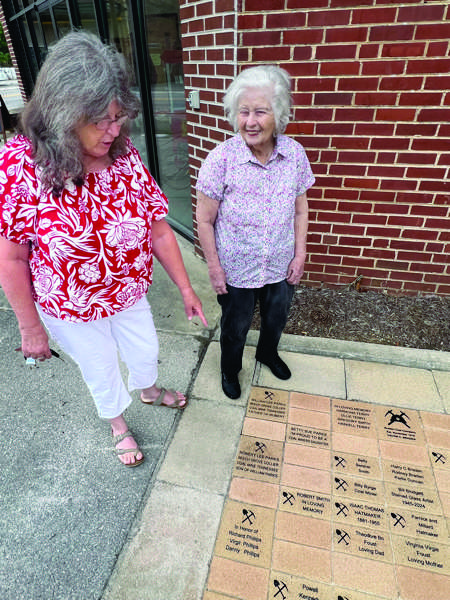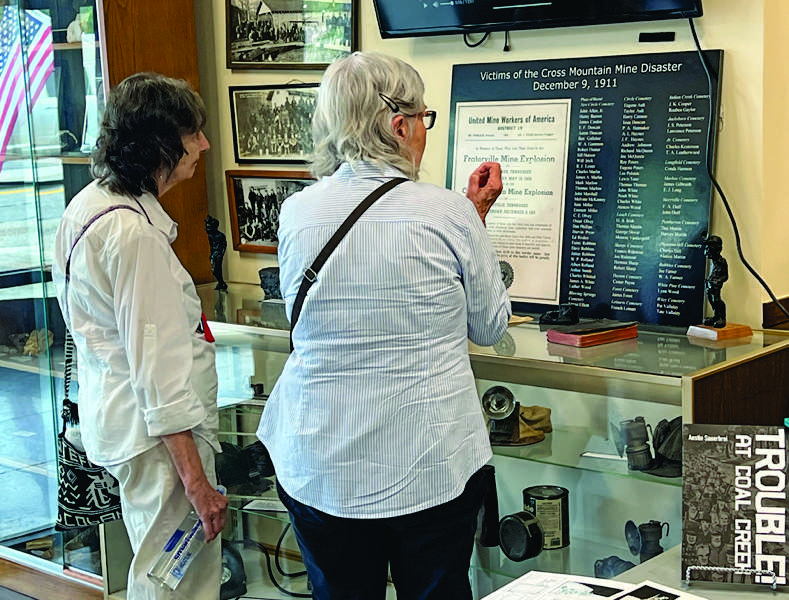Museum dedicates new brick walkway
Dozens of supporters of the Coal Creek Miners Museum in Rocky Top turned out for a ceremony Saturday morning (Aug. 2) dedicating the newest section of its Memorial Brick Walkway.
This special walkway features bricks engraved with the names of many former miners and their family members.
This represents the second phase of the walkway, which is the product of a museum fundraising campaign that involved donors buying the engraved bricks to recognize the role of coal mining in the area, and memorialize those who lost their lives in two major mining disasters nearby in the early 1900s.
There was a similar unveiling of the first section of the walkway in 2024, as supporters and local officials turned out on Independence Day to get their first look at the bricks.
The bricks are permanently set into the sidewalk outside the museum’s entrance across from Rocky Top City Hall.
The museum began the fund-raising campaign in fall 2023 to help pay for upgrades, including a new second floor of exhibits. The bulk of the money for the work for the upgrades came from a $50,000 grant from the state of Tennessee in 2023.
Museum board member Andy Harness, who is overseeing the work to create the second-floor exhibits, was on hand to lead Saturday’s ribbon-cutting ceremony for the second phase of the walkway.
Harness said no date has been set yet for the opening of the museum’s second floor for guests to view, but he said work is well underway.
Among those on hand for Saturday’s event showcasing the newest section of the brick walkway was 90-year-old Betty Sue Parks, who paid for a brick featuring her name and two others bearing the names of relatives William Lee Parks and son Robert Lee Parks, who were each listed as a “Beech Grove Collier.”
Also there looking over a memorial brick laid in honor of relative Lewis Emory Kesterson were Kippy Todd and her mother, Margaret Fritts.
A larger, four-brick segment in the new section commemorates those lost in the Fraterville mine disaster of May 19, 1902. Harness credited Anderson County Mayor Terry Frank for providing the money to pay for that.
Besides the unveiling of the newest section of the walkway, there also was a book-signing inside the museum by author Austin Sauerbrei, author of the graphic novel “Trouble! At Coal Creek.”
The book “brings to life the powerful and inspiring story of the Coal Creek labor uprising and the convict leasing system through vivid illustrations and compelling storytelling, connecting younger generations to the deep roots of our community’s history,” a museum announcement of the event said.
As for the second-floor project, the grant awarded through a program of the Tennessee State Museum allowed the museum to add heating and air conditioning, along with ADA-compliant restrooms, on the floor, along with an elevator to give disabled people access.
Located in a former bank building, the museum is dedicated to preserving and celebrating the history of coal mining in the Coal Creek area, with emphasis on the industry’s impact on the region, and the tragedies that resulted in the deaths of hundreds of miners.
Volunteer curator Lisa Pebley said the second-floor exhibits would help chronicle the local coal industry from the 1940s until its end in the early 2000s.
The main floor, which has been open for several years, details the industry’s impact from its beginning in the 1800s when Henry Howard Wiley brought Welsh miners in to start mining in the area, through the 1940s, Pebley said.
The former bank vault on the main floor holds exhibits telling the story of the Fraterville mine explosion, which resulted in the deaths of 216 miners.



